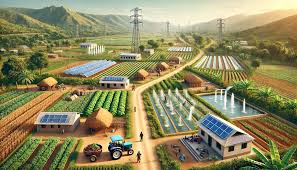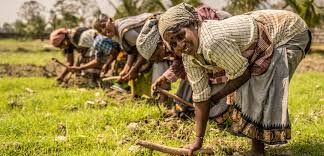Rural development is a critical aspect of societal growth, focusing on improving the quality of life and economic well-being of people living in relatively isolated and sparsely populated areas. As the backbone of many economies, rural areas contribute significantly to agriculture, resource management, and cultural preservation. Understanding the current dynamics of rural development reveals the opportunities and challenges faced by governments, communities, and stakeholders.
Contents
Understanding Rural Development

Rural development encompasses a broad range of activities aimed at improving infrastructure, access to education and healthcare, economic diversification, and environmental sustainability. It involves coordinated efforts from local governments, non-governmental organizations (NGOs), and international bodies to ensure holistic progress.
The primary objectives of rural development include reducing poverty, increasing employment opportunities, and enhancing the availability of essential services such as clean water, sanitation, and electricity. These objectives require tailored approaches that respect the unique needs and circumstances of rural communities.
Key Components of Rural Development
Economic Growth and Diversification
One of the pillars of rural development is economic growth. Encouraging diversification away from solely agriculture to other sectors such as manufacturing, tourism, and renewable energy can lead to sustainable income generation. Microfinance initiatives and cooperatives also play a significant role in empowering rural entrepreneurs and farmers.
Infrastructure Development
Access to quality infrastructure is essential for rural areas to thrive. Investments in roads, transportation systems, internet connectivity, and energy solutions enable better access to markets, education, and healthcare services. Infrastructure serves as the foundation for integrating rural communities into the broader economic framework.
Education and Skill Development
Education and skill development are vital in equipping rural populations to participate in a competitive global economy. Vocational training programs, literacy campaigns, and access to higher education opportunities help in addressing the skill gap and promoting self-reliance.
Healthcare Access and Services
Rural areas often face significant healthcare challenges, including limited facilities, inadequate staffing, and long travel distances to access care. Strengthening healthcare infrastructure and introducing telemedicine can bridge this gap, ensuring rural populations receive timely and quality healthcare services.
Agricultural Innovation
Agriculture remains a cornerstone of rural economies. Modernizing agricultural practices through technology, sustainable farming methods, and access to credit can significantly enhance productivity. Empowering smallholder farmers with knowledge and tools to adapt to climate change is also a crucial aspect of rural development.
Community Participation
Engaging local communities in decision-making processes ensures that development initiatives align with their needs and aspirations. Participatory approaches foster a sense of ownership and responsibility, enhancing the success and sustainability of projects.
Challenges in Rural Development

Limited Financial Resources
Rural areas often face constraints in funding for large-scale development projects. Governments and organizations must balance resource allocation between urban and rural priorities, which can lead to inequities.
Infrastructure Gaps
Despite progress, many rural areas continue to lack basic infrastructure, including reliable electricity, clean water, and proper sanitation. These deficiencies hinder socio-economic growth and perpetuate poverty cycles.
Environmental Sustainability
Rural development initiatives must account for environmental sustainability. Overexploitation of natural resources, deforestation, and pollution can compromise the ecological balance and the livelihoods of rural populations.
Social Inequalities
Gender inequality, caste-based discrimination, and ethnic marginalization are significant barriers to inclusive rural development. Addressing these issues requires focused policies and programs that promote equity.
Technological Accessibility
While technology has the potential to transform rural areas, the digital divide remains a challenge. Limited internet connectivity and digital literacy hinder the adoption of technological solutions that could drive development.
Innovations in Rural Development
Renewable Energy Solutions
Renewable energy technologies, such as solar panels and wind turbines, have partaitogel revolutionized energy access in rural areas. Off-grid solutions provide electricity to remote locations, empowering communities and enabling economic activities.
Digital Inclusion Initiatives
Expanding internet access and promoting digital literacy are crucial in integrating rural areas into the global economy. E-commerce platforms, online education, and telemedicine services are transformative tools for rural development.
Climate-Resilient Agriculture
Innovative approaches to farming, such as precision agriculture and agroforestry, help mitigate the impacts of climate change. These practices improve productivity while conserving natural resources.
Microfinance and Social Enterprises

Microfinance institutions and social enterprises offer financial services and business opportunities to rural populations. These models empower individuals to start businesses, improve livelihoods, and contribute to community development.
Decentralized Governance
Decentralized governance systems allow local governments to take charge of rural development. Empowering local authorities with decision-making power ensures that initiatives are context-specific and effective.
The Role of Stakeholders
Government Agencies
Governments play a pivotal role in policy formulation, resource allocation, and infrastructure development. National and regional rural development strategies often set the framework for progress.
Non-Governmental Organizations (NGOs)
NGOs work closely with rural communities, implementing projects that address specific needs. Their grassroots presence enables targeted and sustainable interventions.
International Organizations
Global organizations like the United Nations and the World Bank provide technical assistance, funding, and expertise to rural development efforts. International cooperation fosters knowledge-sharing and innovation.
Private Sector
The private sector contributes to rural development through corporate social responsibility (CSR) initiatives, investments in infrastructure, and creating employment opportunities. Public-private partnerships are increasingly recognized as effective in driving development.
Local Communities
The active participation of local communities is critical to the success of rural development initiatives. Their involvement ensures that projects are relevant, sustainable, and impactful.
The Future of Rural Development
The future of rural development hinges on innovation, collaboration, and sustainability. Embracing smart technologies, fostering inclusive policies, and prioritizing environmental conservation are essential steps in advancing rural areas. Governments and organizations must adopt adaptive strategies that respond to emerging challenges and capitalize on new opportunities.
Conclusion
Rural development is a multifaceted endeavor requiring coordinated efforts from governments, NGOs, the private sector, and local communities. By addressing economic, social, and environmental challenges, rural can unlock the potential of millions and contribute to national and global progress. The journey to achieving sustainable rural development demands commitment, innovation, and collaboration from all stakeholders involved.



